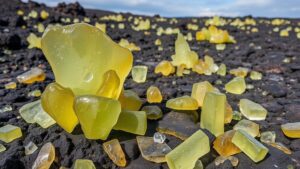The influence of ancient gold mining techniques on modern treasure hunting.
The Influence of Ancient Gold Mining Techniques on Modern Treasure Hunting
Gold has fascinated humanity for thousands of years, appreciated not only for its beauty but also for its rarity and value. The methods utilized by ancient miners have not only left a mark on the historical landscape but have also significantly influenced modern treasure hunting practices. This article explores how ancient techniques have shaped current methodologies, shed light on their relevance, and examined their implications in the treasure hunting field.
Historical Context of Ancient Gold Mining
Gold mining dates back to prehistoric times, with evidence suggesting that the ancient Egyptians began mining gold as early as 3000 BCE. Known for their advanced techniques, the Egyptians employed various methods, including panning, shaft mining, and using fire-setting to fracture rock. By the time of King Tutankhamun (c. 1332-1323 BCE), they had refined their techniques, resulting in the recovery of exceptionally pure gold used in artifacts and burial items.
In another part of the world, South America saw the emergence of the Muisca civilization, which, in the early 16th century, engaged in sophisticated gold extraction methods. would utilize hydraulic mining, a technique that involves redirecting water to wash away soil and sediment, revealing gold deposits, known as El Dorado. The term would eventually lead to the legend of a city of gold that captured the imagination of explorers.
Key Techniques and Their Modern Applications
Modern treasure hunting owes much to the techniques developed by ancient civilizations. A few of these methods are still in use today, adapted for contemporary technologies.
- Panning: This age-old technique involves swirling water and sediment to separate gold from other materials. Today’s prospectors still utilize gold pans as they offer an effective, low-cost way of locating gold in streams and rivers.
- Hydraulic Mining: Although hydraulic mining has fallen out of favor due to its environmental impacts, the principles behind it have influenced modern equipment such as high-pressure water jets used in industrial mining.
- Metal Detecting: Inspired by ancient miners keen eye for identifying gold-bearing areas, metal detectors have revolutionized treasure hunting, allowing enthusiasts to locate valuables below the surface more efficiently.
Challenges and Considerations in Modern Treasure Hunting
While ancient methods have laid the groundwork for modern practices, treasure hunting today involves challenges that ancient miners did not face, such as:
- Legal Constraints: Modern treasure hunters must navigate local and national laws governing artifact recovery. UNESCO Convention on the Means of Prohibiting and Preventing the Illicit Import, Export, and Transfer of Ownership of Cultural Property stands as a key legal framework.
- Environmental Impact: The ecological effects of mining practices have raised significant concerns. Modern treasure hunters often advocate for sustainable practices to mitigate damage to ecosystems.
- Technological Dependence: The reliance on advanced technology like drones and imaging software may overshadow traditional skills and knowledge that are valuable in locating treasures.
Case Studies: Why Understanding Ancient Techniques Matters
The blending of ancient wisdom and modern technology is both intriguing and practical. A notable example includes the gold rush in Alaska during the late 19th century, where many prospectors relied on methods reminiscent of ancient Roman gold mining techniques, such as sluicing. e approaches allowed them to extract gold from rivers efficiently.
Also, the resurgence of interest in historical mining areas, such as the California Gold Rush sites, demonstrates that understanding past techniques provides modern treasure hunters with a strategic advantage, enabling them to unearth hidden treasures that others may overlook.
Actionable Takeaways for Modern Treasure Hunters
For aspiring treasure hunters, embracing the lessons from ancient mining techniques can enhance their chances of success. Consider the following actionable takeaways:
- Study and practice traditional methods like panning before investing in advanced gear.
- Research the historical context of the areas you explore to identify potential sites rich in gold.
- Prioritize eco-friendly practices to contribute to sustainable treasure hunting.
To wrap up, the rich history of ancient gold mining techniques has profoundly shaped modern treasure hunting. By appreciating these historical practices, treasure hunters can enrich their knowledge and improve their methods, maintaining a respectful relationship with our planet while uncovering the treasures of our past.



